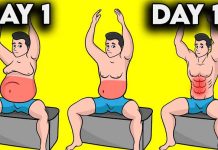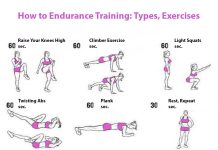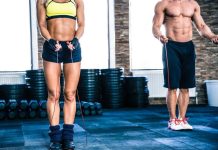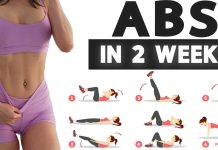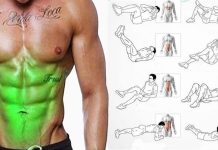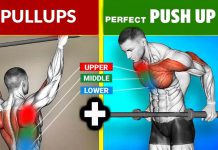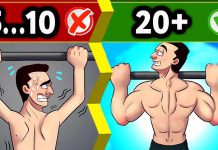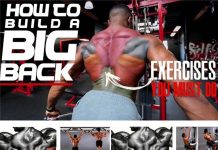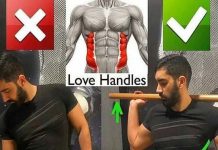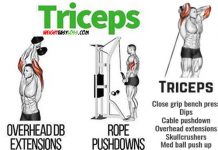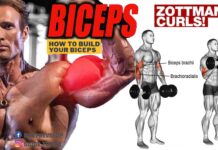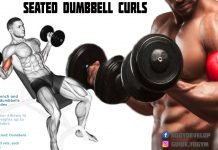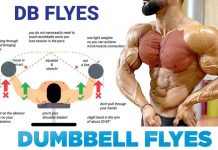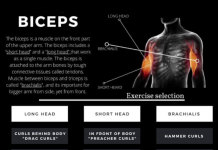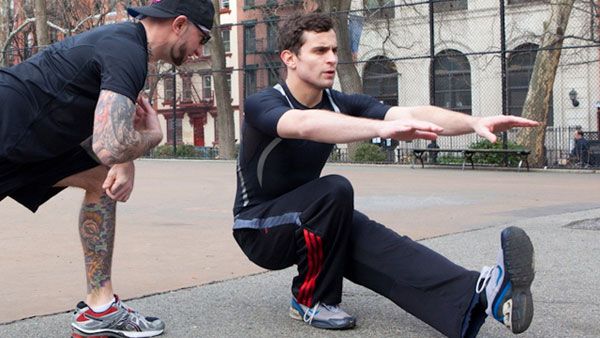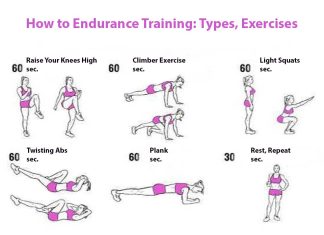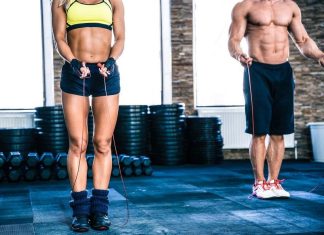“Pistol Squat” or doing sit-ups on one leg!
[wp_ad_camp_2]
[wp_ad_camp_1]
Squats on one leg or a “pistol” is a complex and rather ambiguous exercise. For many it is familiar with school physical education lessons, but in adulthood only a few athletes can perform it at least a couple of times. Let’s look at the order in detail, what is the peculiarity of such squats, what is the use of their implementation and possible contraindications, and how to learn how to do it
Advantages and disadvantages of exercise
Squats on one leg is a powerful exercise that involves a huge muscle mass and allows you to pump the muscles of your legs and buttocks, performing an exercise with your own weight, that is, without any equipment, and even without leaving home.
The impact of such squats on the muscles of the lower body is comparable to squats with a bar of your weight. The difference lies in the fact that in the case of squats with a weight on two legs, weighting presses on the spinal column. For people with a sick back, this can create significant difficulties – they simply are not contra-indicated. Squats on one leg can be used to gain weight and increase the strength of the muscles of the lower body.
Effects on muscles
If you specifically consider the work of muscles, the load distribution is as follows:
- The main load falls on quadriceps. Also significant – on the gluteus major muscles.
- In addition, they work and help stabilize the position of the supporting leg and body: the hamstrings, the adductor muscles, the calf muscles, the back and the press.
- At the raised leg works a quadriceps, the tensor of the wide fascia, a sartorius muscle, a comb muscle.
Load on the knee joints
[wp_ad_camp_4]
[wp_ad_camp_1]
The greatest burden is placed on the knee joint. When this squat is performed, the knee bends at an acute angle, until the hamstrings and calf muscles come into contact. Therefore, if you have ever had problems with your knees, you feel discomfort at usual squats, painful sensations when running or walking. squats with a pistol you are strictly contraindicated.
[wp_ad_camp_5]
If you are all right with the knees, take into account the following two points:
- Before starting the training of the pistol, warm-up and stretching are mandatory.
- Exercise does not imply sudden movements. Until your muscles get stronger – do exercises with support, do not fall sharply down and do not get up jerk. Otherwise, the full benefit of doing the exercise can be crossed out by getting an injury.
Technique of Exercise
Exercise Let’s consider the technique of performing the exercise in pure form, which we should strive for below. This is the performance of squats on one leg without additional support. Now we need to understand what an exercise is.
- Stand up straight and place your feet shoulder width apart. Transfer the weight of the body to the supporting leg, the second leg slightly tear off the floor. Hands pull forward for balance.
- Slowly and under control, squat on the supporting leg, while simultaneously lifting forward the straight second leg. At the same time, your pelvis should be retracted, not tucked forward. Here, then, flexibility is needed in the hip joints. The body tilts forward for balance. Strive to keep your back flat. The second (non-working) leg is absolutely straight, it should go up simultaneously with how you go down.
- starting at the bottom point of the movement (the hamstrings biceps pressed against the calf muscle), check the position of the non-working leg. It must be parallel to the floor. If possible, the back should be straight. The knee of the supporting leg will go beyond the sock, and this exercise differs from the classical squats. Actually this is the most traumatic moment in the whole movement.
- Maximize the muscles of the thighs and buttocks and with force, but without a jerk, push from the floor with the heel of the supporting leg. Raise the pelvis and straighten the knee. The non-working foot should be attached to the supporting leg.
This exercise is performed as many times on each leg as your preparation allows – that is, to the maximum. Believe me, if you bring the number of sit-ups to a dozen, you will get an intensive training of not only your legs, but practically the whole body.
Subscribe to our channel on Youtube there are collected all the workouts from our site and we are constantly updating the content, it will be interesting | to do this, click the button | [wp_ad_camp_3]












